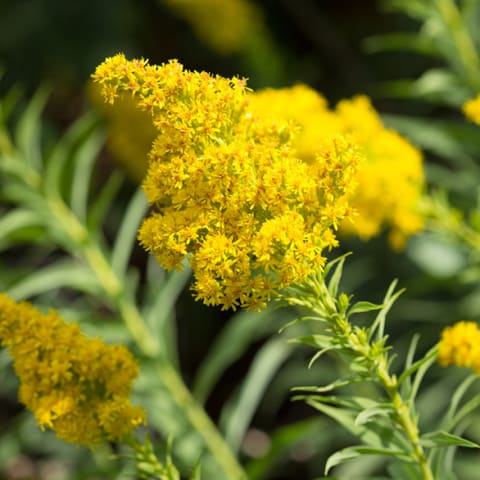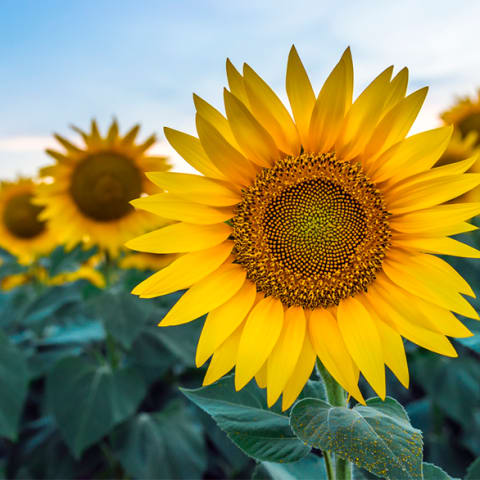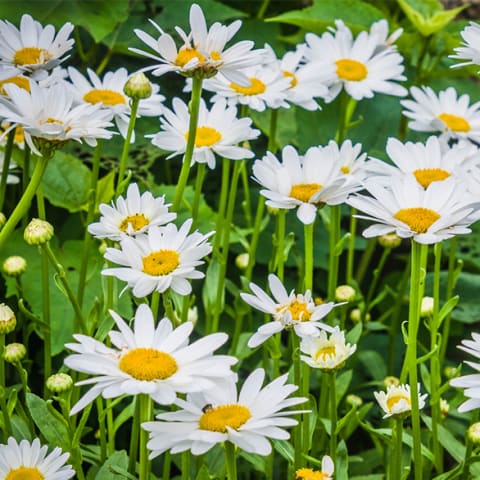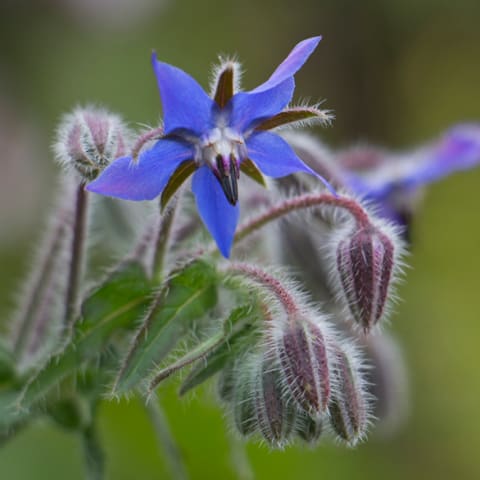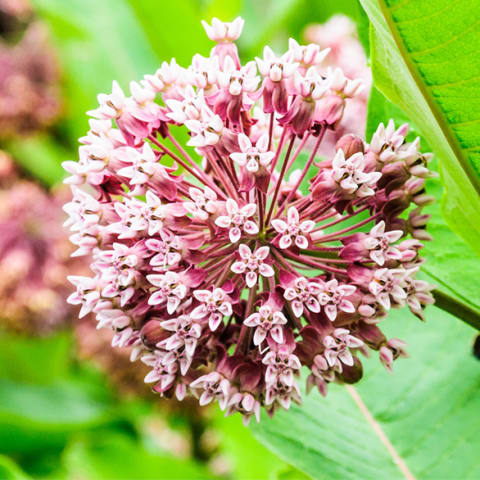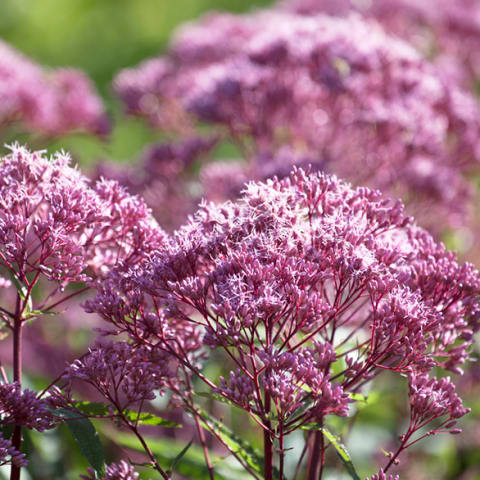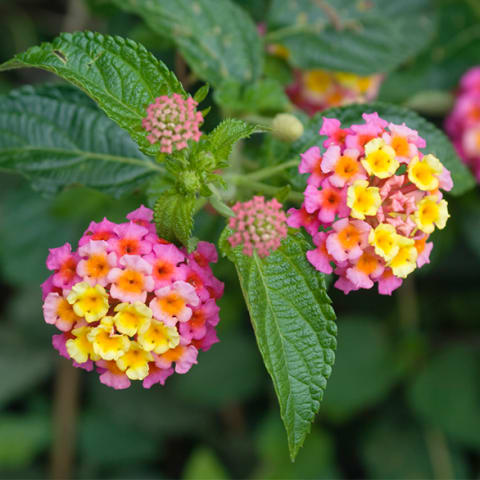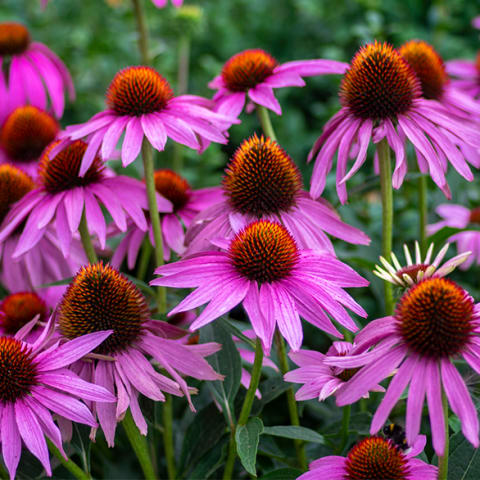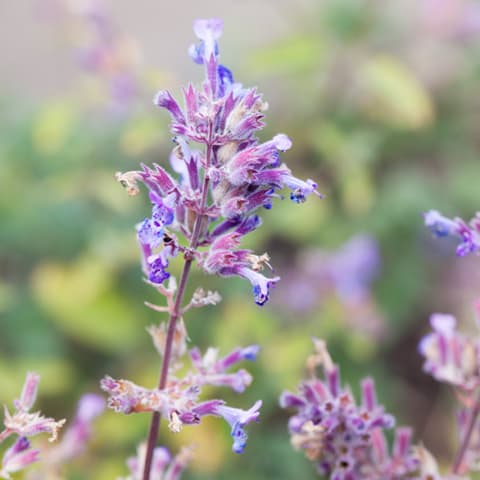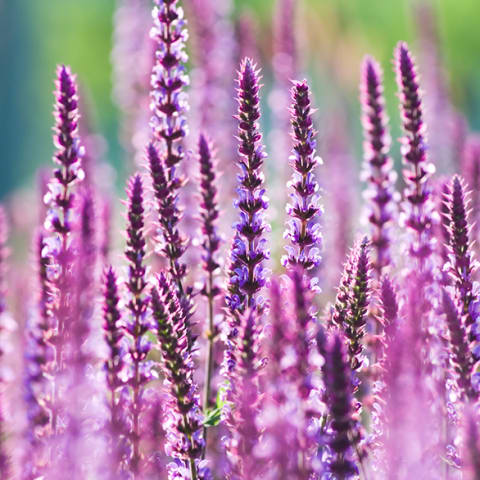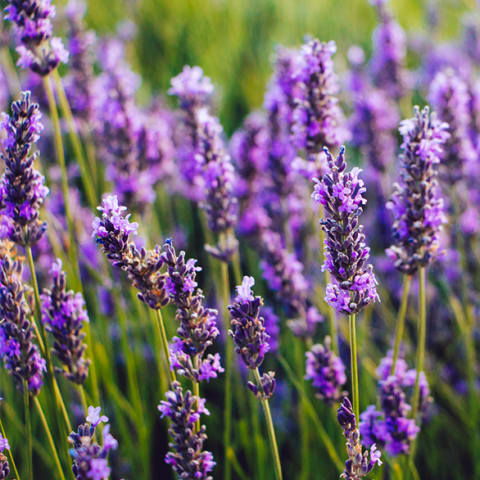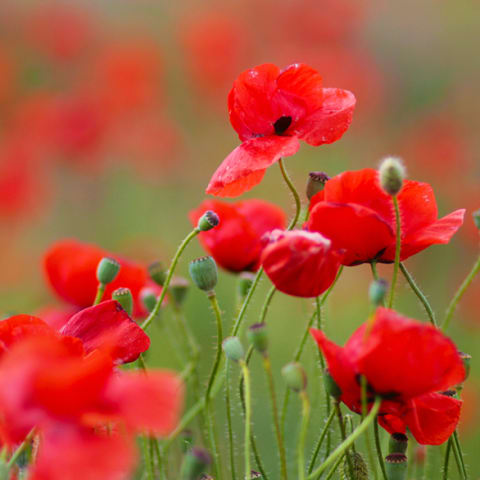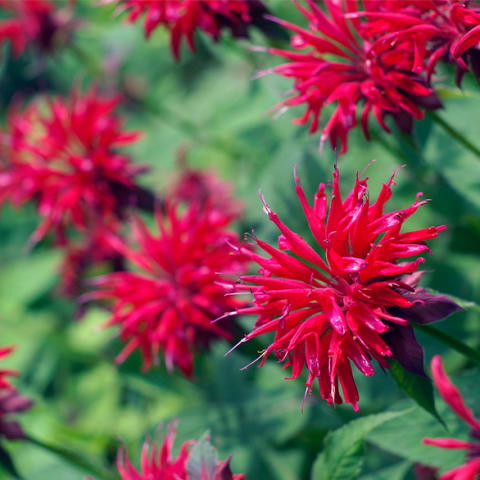Here, landscape and gardening experts share 14 blooms that are both beautiful and bee-friendly. And they’re not the only pollinators that can help bring life to your yard. Blythe Yost, the co-founder and CEO of online landscape design company Tilly, notes that butterflies, moths, flies, beetles, bats, and some birds are also active pollinators. Together, these pollinators make it possible for about 90% of the world’s flowering plants and 35% of our food to grow. “If we had to all just wait around for the wind to meticulously pollinate plants, we’d be waiting forever! Nobody would eat,” says Ashlie Thomas of The Mocha Gardener. So even if bees aren’t your favorite critters, it’s important to create a refuge for them so they can continue to do the important work of pollinating the plants that make our world go ‘round. One way to do so is to stop using harsh herbicides or pesticides, which threaten bees and contribute to colony loss1. Instead, feed the bees what they love most: flowers! The vibrant colors and signature scents of flowers will quickly attract bees looking to feed on their sweet nectar. That means looking for blooms in lots of eye-catching colors: Thomas notes that hummingbirds love red blooms, for example, while Yost says that many bees are all about blues. It’s also wise to plant flowers that will bloom at different times of the year, ensuring that your local pollinators will have something to snack on from spring till fall. Finally, whatever you plant should be able to thrive in your particular area. Make sure a flower is a fit for your USDA Hardiness Zone (if in the U.S.) before you put it in the ground and isn’t considered invasive in your region. Native flowers will almost always be best for your native wildlife. Here, we’re sharing 14 blooms that our gardening experts adore for bringing the bees to the yard. Choose a few from each color category for a dynamic garden that’ll look just as appealing to pollinators as they will to your guests. Bloom in: Late summer Since these golden yellow flowers tend to bloom later in the summer, Yost says they can make a great addition to your bee-friendly yard. “[Goldenrods] are very easy to grow, like almost all soils, and are drought-resistant,” she adds. Bloom in: Summer These large, bright flowers will catch the attention of many pollinators, including bees. Single-flower sunflower varieties also tend to be easy to extract nectar and pollen from, compared to more complicated blooms. “Double-headed flowers look great but produce much less nectar, making it more difficult for bees to access pollen,” Yost explains. The more direct sun you give these yellow beauties, the faster they’ll grow. Bloom in: Summer As long as you choose a marigold with an open center like the Little Gem, bees will be attracted to its bright flowers. Marigolds are incredibly resilient and can thrive in most conditions, making them a great option for beginner gardeners. Bloom in: Summer These classic dainty flowers are hardy perennials, and their bright yellow centers can keep bees fed year after year. Shasta daisies are low maintenance and will be happy with once-weekly watering and occasional pruning in the summer months. Blooms in: Summer “If you want to bring all of the bees to the yard, Borage will do that,” Thomas says of this adaptable electric blue flower. Honeybees and native bee species will go crazy for their blooms (which are considered medicinal for us humans too2). Borage will also be a nice companion plant to any fruits or veggies you’re growing in the garden. Blooms in: Summer “Milkweed is great for butterflies, but guess what? The bees like it too,” says Thomas. These voracious growers can also spread very easily—a little too easily if you ask some gardeners. “Once the flowers die off, the seeds disperse and you will have milkweed forever and ever,” Thomas adds. Blooms in: Late summer This mouthful of a flower (said to be named after an Indigenous herbalist) is a native prairie plant that will grow taller, and bloom later, than others in your garden. Yost appreciates how Joe Pye Weed stands out in a crowd, making it appealing to bees and native wildlife. Blooms in: Spring to Fall Lantana’s small, colorful flowers can bloom from late spring to the first frost in hotter regions, and it’s a perennial plant in some Southern states (an annual everywhere else). “Many annuals are sterile because they’ve been grown for their flowers, but Lantana has great cluster blooms that bees love,” Yost notes. Blooms in: Summer Echinacea, or coneflowers, are another perennial that bees adore. “They provide an abundant source of nectar for pollinators over and over again. They can eat off of coneflowers for quite some time,” says Thomas. Plus, these vivid blooms that come in many colors are easy to care for and able to withstand winter in most regions. Blooms in: Late spring & summer This dramatic purple perennial blooms repeatedly if cut back after each bloom, says Yost, and depending on where you live, it will be one of the first flowers to attract pollinators to your yard. Save a few Catmint petals for yourself to brew into a stomach-soothing tea. Blooms in: Summer Another fragrant flower, Thomas notes that Salvia is in the sage family, “so it releases this really strong but delicious Earthy aroma that is so attractive to bees.” These drought-tolerant blooms will also lend plenty of visual interest to your garden without more care. Blooms in: Spring Yep, the distinctly delicate scent of lavender is addicting to bees too. Its purple color will also attract a wide variety of pollinators. Plant your lavender in full sun and well-draining soil, and prepare for your garden to smell and look divine. Bloom in: Summer When these fast-growing flowers bloom, they provide a ton of pollen for local bees to feast on. One of Vallin Kostovick’s favorite varieties for pollinators, Oriental Poppies also come in lots of eye-catching colors. (Imagine these stunners in a bouquet!) Bloom in: Summer True to their name, Bee Balm flowers are delightful to bees and other pollinators. This member of the mint family has aromatic leaves and nectar-rich flowers. Bee Balm thrives in full sun and moist soil, and you might want to plant it in its own patch as it’s quick to spread. You don’t need to fill your entire garden with colorful bunches of flowers to attract bees. Trees, shrubs, flowering kitchen herbs, and even common weeds can also feed pollinators and add more areas of refuge to your wildlife-friendly yard. Here are a few that Vallin Kostovick, Thomas, and Yost think are the bee’s knees (again, just be sure to check that they’ll fit in your climate and hardiness zone before planting): Emma received her B.A. in Environmental Science & Policy with a specialty in environmental communications from Duke University. In addition to penning over 1,000 mbg articles on topics from the water crisis in California to the rise of urban beekeeping, her work has appeared on Grist, Bloomberg News, Bustle, and Forbes. She’s spoken about the intersection of self-care and sustainability on podcasts and live events alongside environmental thought leaders like Marci Zaroff, Gay Browne, and Summer Rayne Oakes.


